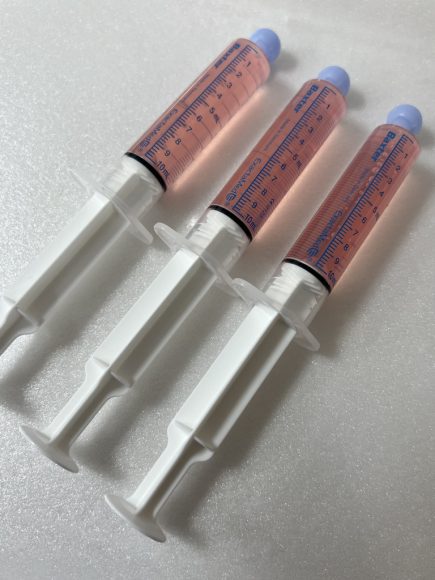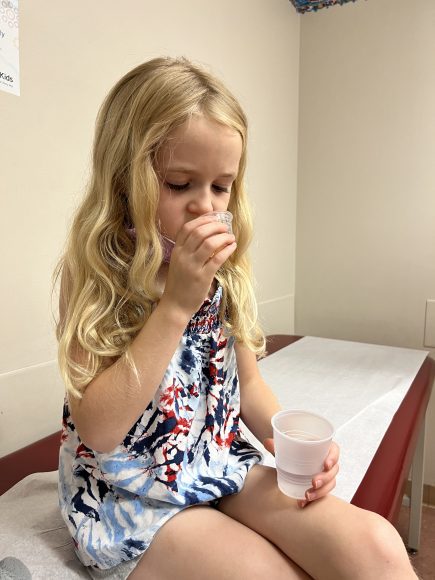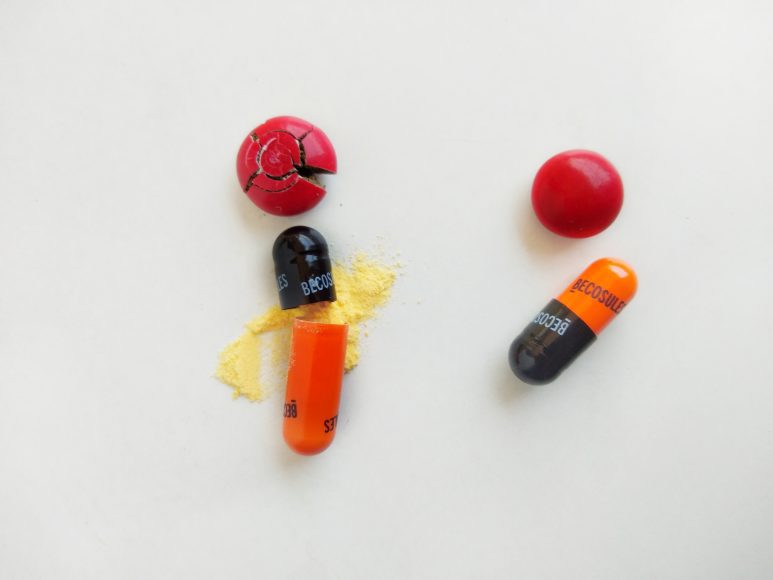We could all use some tips for getting our kids to take their medicine!
Fall is here, and with fall usually comes an uptick of flu and cold viruses. Unfortunately, kids like to share germs, and it can be inevitable, no matter how hard we may try to avoid it. Sometimes kids need medicine to treat their symptoms and let’s be honest, we all wish it was as easy as a “spoonful of sugar makes the medicine go down,” as Mary Poppins sings. Here are a few ideas that may help make the medicine go down.

1. It is important to, first and foremost, stay calm throughout this situation.
Staying calm and being patient helps our kids stay calm and ensures the situation goes smoother.
2. Make sure your child understands why he/she is taking the medicine.
Speak to your child using terms that are easy to understand. It is important your child understands the medication is being given to make him/her feel better in the end. For example, if your child is taking an antibiotic for strep throat or ear infection, let your child know you are giving her/him medicine to help their throat or ear stop hurting.
3. Always use a syringe with liquid medicine.
Giving liquid medicine in a syringe that often comes with it will be most helpful versus a cup or spoon. If your child spits the medication out, you can determine how much you need to replace if needed. Don’t try to sneak it in through food.
4. Give your child a choice in how he/she wants to take the medicine.
Giving your child an option can help your child feel like she/he has a little control in the situation rather than being forced to take the medicine. As a nurse, I typically offer the child the option to have a parent or me give the medicine or the child can take it him/her self. Offer your child juice or water to drink with the medicine. Your child can take sips after swallowing a few milliliters of medicine if needed.

5. Have the medication flavored when you have the prescription filled.
The flavoring can minimize the nasty taste some medicine can have. When you have it flavored, ask what flavors the pharmacist recommends for the medication and choose one of the recommendations. If flavoring still does not do the trick, a cold popsicle or drink can numb the taste buds and help the medicine taste less yucky.
6. Keep your child in an upright position.
This avoids any choking or vomiting for your child. If your child is resistant to taking medication, have an adult hold the child in an upright position in a bear hold (holding your child’s arms and legs down with your arms and legs). You will need to open your child’s mouth by moving their chin down. Guide the syringe into your child’s mouth between the teeth or inside the cheeks. Once you push the medicine into your child’s mouth, keep their mouth closed until they swallow. If your child is crying, blowing a quick burst of air into their face helps them stop crying quickly enough to swallow.
7. Ask the pediatrician if your child can take chewable tablets instead of liquid.
When your child gets to be a certain age, some medications like Tylenol, ibuprofen, and allergy medicine can be given in the form of a chewable tablet. Oftentimes, children will be more willing to chew a tablet versus swallowing the liquid version.

8. Crush the tablet or open the capsule and mix it with pudding or applesauce.
Any soft foods that you can mix and scoop with a spoon will do. Check to make sure this is safe and okay prior to doing this with the medication. Only mix a small spoonful of the soft food with it.
9. Reward your child for taking the medicine.
Medicine is not fun to give or take, especially when it is a battle. Reward your child with stickers, lollipops, or a treat for taking it.
If these ideas do not work and you are not successful in getting the medicine down, please reach out to your child’s pediatrician for further guidance.










